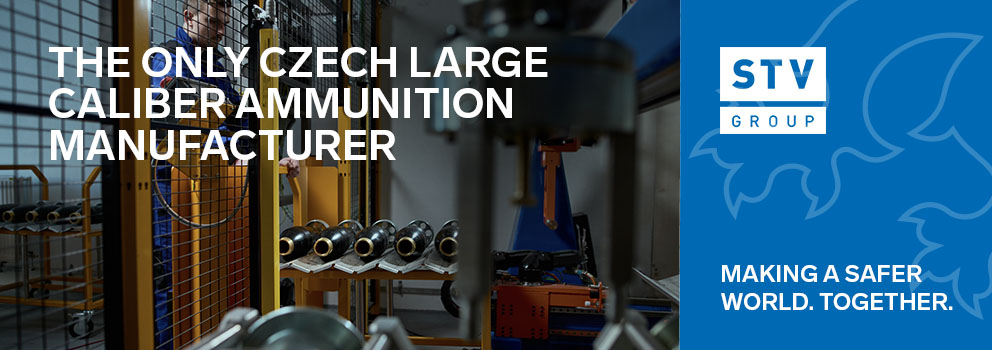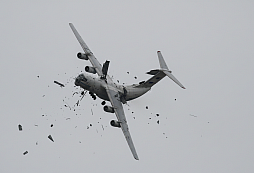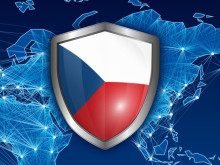Technological Trends to 2043 and the Creation of New Security Capabilities of the Czech Republic
A key element of the creation of real higher added value in a market economy is the implementation of innovations in market products (products, services). The source of innovation is mainly science and research, which creates the factual basis for the creation of new technologies that can then enable the creation of new market products or a major modification of existing products. The creation of innovation is a specific process with its own rules and is implemented through different innovation ecosystems.
Innovation can be created in any field of human activity. The ability to create and implement innovations is important not only for various civilian production sectors, but also for ensuring environmental safety. Innovations in the security domain can significantly affect both the effectiveness and efficiency of various security activities implemented, as well as provide various strategic or operational advantages to security actors, which can also be decisive for the course and outcome of various security conflicts.
Innovations can vary in scope depending on the change their implementation leads to. Therefore, different orders of innovation are often discussed - see, for example, the following table:

In the case of a 7th order innovation, another term that is very popular today can already be used, namely disruptive, or if you prefer, disruptive change. The basic difference between innovation and disruptive change is basically that innovation improves the quality of a current product or process in an evolutionary way (incrementally), whereas disruption is a revolutionary change that significantly, step-changes the characteristics of a process or approaches to solving certain problems using new scientific knowledge and technologies. If we look at innovation from a financial perspective, the higher the order of the innovation being implemented, the greater the need for available financial capital necessary to actually develop and implement the innovation (in the case of a 7th order innovation, this can be tens of billions of dollars). Different countries have different economic capabilities and should consider what orders of innovation they can support or implement.
Another important specificity of innovation creation and implementation is that the process may not be successful in the end - so it is a risky process. Thus, the available capital invested may not be returned and will simply have to be written off. This is particularly a problem when public funds are involved - which are usually required to be returned if the objective for which they were allocated is not achieved. To reduce this risk, the innovation process is implemented incrementally (i.e. in stages) or the risk is transferred to someone else by financing the innovation process, e.g. through venture capital funds.
If we accept the incremental way of creating and implementing innovation:
- we need to create a properly structured innovation ecosystem (elements-innovation incubators, innovation accelerators, corporate R&D centres, testing centres, etc.);
- we need to find appropriate meaningful rules for the progression of innovation projects within an incremental system of innovation creation and implementation (new things simply cannot be introduced using old decision-making and management models);
- we need to create a suitable infrastructure for testing innovation - this testing will be the basis for moving an innovation project forward in the incremental innovation system.
The fulfilment of each of the above conditions depends on the availability of qualified personnel - both in quantity and quality. Innovations, much less disruptive technologies, cannot be introduced smoothly and quickly in a system where people have no idea of the nature of the change being implemented, the opportunities and benefits the innovation brings, and how and where best to apply it to maximize benefits with minimal risks.
Therefore, not only will it be necessary to find effective implementations of the above, but it will also be necessary to find a way to adequately ensure the safety of innovation processes. In the last century, most innovation was primarily within the military infrastructure, where there was no fundamental problem in securing innovation through standard state secrets tools. Nowadays, this will have to be ensured with the help of a special ecosystem for the creation and implementation of innovations in the security field, which will have to be created as soon as possible on the platform of the security system.
The Czech Republic should optimize the national ecosystem for the creation and implementation of innovations in the security sector as soon as possible, also in view of the not very positive trends in the international security environment. As a NATO member country, it would be effective to draw inspiration from and take advantage of all the relevant activities that NATO is implementing in the field of innovation creation and implementation.
NATO – Science & Technology Trends 2023-2043
In March 2023, NATO published a very comprehensive study, Science & Technology Trends 2023-2043, which identifies trends primarily in Disruptive and Emerging technologies over the next 20 years.

This study not only identifies in Part 1 the disruptive and emerging technologies that will be the source of innovations in the security domain - i.e. new security capabilities in the next 20 years, but in Part 2 it also provides a more detailed analysis of these trends - strategic positions of key actors, possible new security capabilities, etc.
The study identifies:
These disruptive technologies:
- Big Data, information and communication technologies
- Artificial Intelligence
- Robotics and autonomous systems
- Space technologies
- Hypersonic technologies
- Energy and Propulsion
- Electronic and Electromagnetic Technologies
Emerging technologies:
- Quantum Technologies
- Bio Technologies
- Human Enhancement Technologies
- New materials
- New manufacturing processes
The study also identifies possible combinations of the above technologies - these combinations offer opportunities to exploit technological convergence and synergies:
- Big Data-Artificial Intelligence-Autonomy
- Big Data-quantum technologies
- Space technologies-hypersonic technologies-new materials
- Space technology-quantum technology
- Big Data-Artificial Intelligence-Biotechnology
- Big Data-Artificial Intelligence-New Materials
- Energy-New Materials-Artificial Intelligence
In the period up to 2040, the above technologies can be expected to be applied to the creation of security capabilities, see the following table:

For each technology, it is necessary to specifically assess not only their innovative potential, but also the limits of their practical applicability and the risks of their use. For example, quantum computers are only usable for solving selected algorithmic problems that are able to take advantage of a specific method of quantum computing. Or artificial intelligence is only safely usable where the relevant neural networks and the data they use can be adequately protected from, for example, cyber-attacks. Also, regulations in the field of new technologies that may significantly affect the applicability of these technologies in the security field need to be analysed in detail. The results of these analyses should form a substantive basis for the elaboration of a national strategy for the further development of the capabilities of the security system of the Czech Republic until 2040, which should be discussed by the Security Council and subsequently by the Government of the Czech Republic.
NATO - DIANA Innovation Platform
In addition to the trend considerations in the area of innovation creation and implementation, NATO has created its own innovation ecosystem to support the creation of new capabilities using innovative technologies within the NATO member states' environment.
The DIANA (Defence Innovation Accelerator for the North Atlantic) innovation platform is based on the creation of a specific ecosystem for defence innovation, consisting of 10 accelerators (supporting innovation creation and implementation activities) and 60 test centres for testing capabilities emerging from innovation projects - see maps below:


As you can see from these maps, the Czech Republic is represented in this ecosystem as an accelerator only by CzechInvest (which has almost nothing to do with security and defence) and there are no test centres registered yet. This is certainly not a flattering result and it is in the interest of the Czech Republic to change this as soon as possible.
As mentioned above, the number of suitable experts and managers with knowledge and experience in the practical implementation of innovations is always a very limiting factor in the creation and implementation of innovation projects. Such human resources should be located or concentrated in an appropriate element of the innovation ecosystem - e.g. an accelerator. It would also be appropriate to support all educational activities that could significantly increase the number of qualified people in the innovation creation and implementation environment in the medium term.
In addition to this innovation ecosystem, NATO has created a financial fund to support Innovation Projects (approx. 1 billion EUR). DIANA has already launched a first call to select 30 innovation projects to be included in the Innovation Camp and after 6 months 3-6 innovation projects will be selected from these to move to the next phase of the incremental process of supporting innovation projects in NATO. The first call for projects from the field was opened in May 2023:
- Sensing and Monitoring
- Energy Resilience
- Secure Information Sharing
The following timeline can also be found within the call:

This NATO approach could be an inspiration for the Czech Republic, which is still looking for a model for an effective ecosystem of support for innovative projects in the field of security and defence. One can only hope that this search will not take too long - in my opinion, the Czech Republic cannot simply accept this risk, even with the existence of NATO security guarantees - we should not repeat the mistakes of our past.
The topic of innovation for security and defence applications is one of the main components of the programme of the upcoming edition of the international project FUTURE FORCES FORUM, which will take place from 16 to 18 October 2024 in Prague. A dedicated programme within the Innovation Pavilion at Future Forces will showcase young, small innovative companies, innovation centres, public and private universities, schools or student teams presenting new technologies, advanced solutions or services. It will also include the participation of experts from national institutions and international organisations, including NATO and EDA.
























